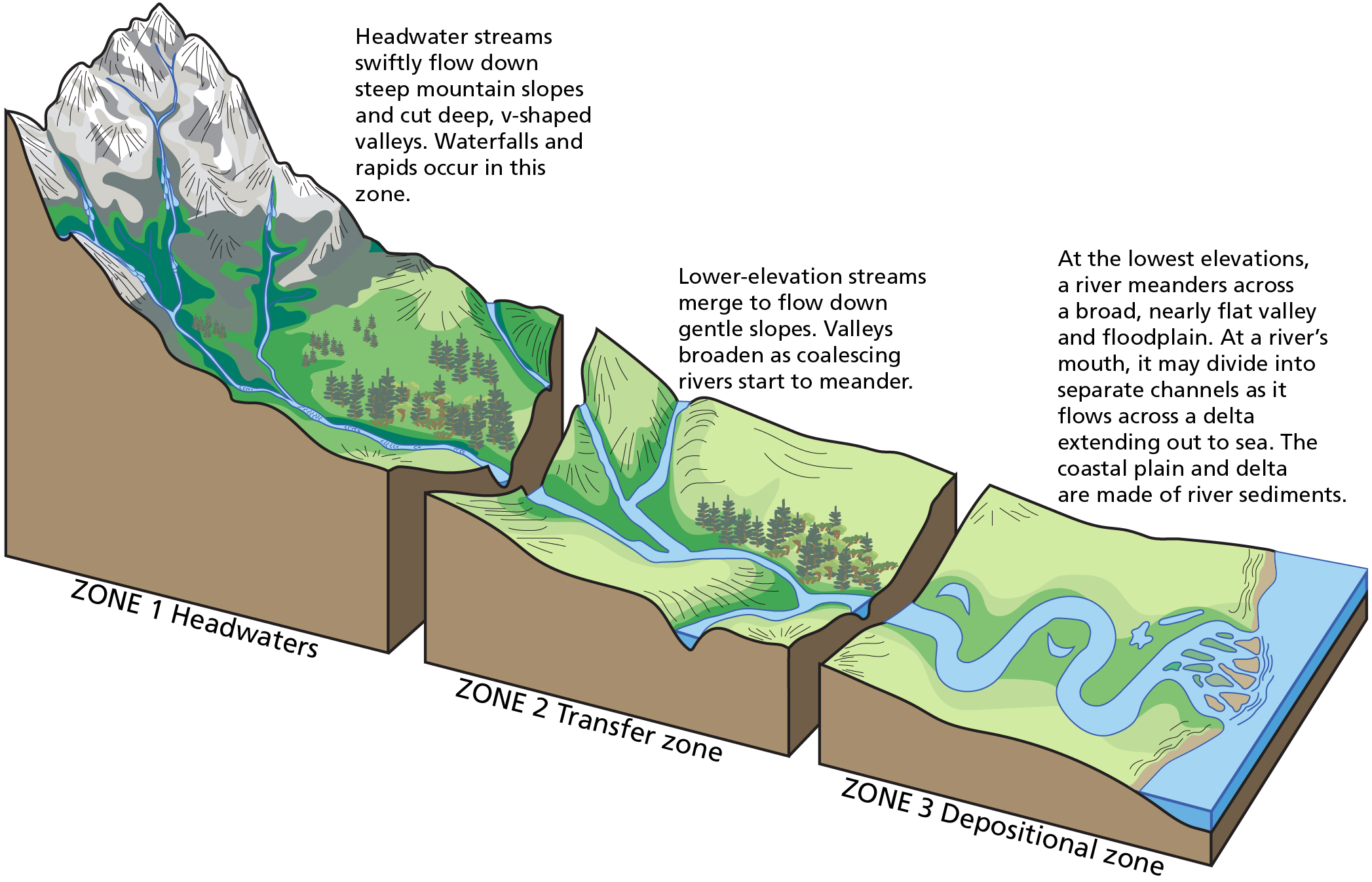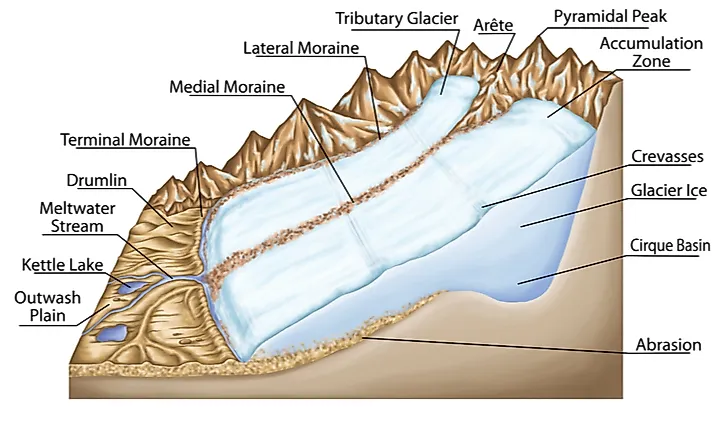These are made up mainly from sediments deposited by waves. When wave velocities slow down or when ocean currents slow down because of frictional forces like the sea bed vegetation and other counter currents deposition occurs.

Glacial Erosion And Deposition Earth Science
As the name suggests the topsets are the topmost layers.

. Water Water carves out. Erosion transportation and deposition the Hjulström Curve. SCGS Fluvial Landforms Processes Rivers are one of the most dominant agents of landscape change.
Wave zones and beach morphology The gradient of the beach tends to change during the year. Truncated delta On the basis of growth. Is material carried in the middle of the glacier.
ATug Hill Plateau BAdirondack Mountains CSt. When this happens the existing rocks temperature rises and also becomes infiltrated with fluid from the magma. Landforms of Coastal Deposition Coastal deposition is when the sea drops or deposits material.
The first to be deposited is sand which is the coarsest sediment. The significant landforms resulting from fluvial erosion by streams include river valleys waterfalls pot holes structural benches river terraces river meanders ox-bow lakes and peneplians etc. Lithosphere - Earths inorganic portion of land both on land and on seafloors.
All three depend on the amount of energy there is in a river. Is the material that has fallen onto the side of a glacier and carried along by it. Terminal Moraine is deposited by the glacier at the snout as it retreats.
On the basis of shape. Atmosphere - Gaseous envelope of air that surrounds Earth. Beaches The beach is the area between the lowest spring tide level and the point reached by the storm waves in the highest tides.
The plains formed by the filling up of sediments carried by agents of Erosion like wind rivers glaciers and underground water into depressions are called Depositional plains. These are erosion transportation and deposition. The shape and dimension of fluvially originated valleys change.
The backshore typically features the material deposited by storm waves. These are the glacially formed accumulation of unconsolidated glacial debris. These plains are formed by the deposition of sediments brought down by rivers.
Drainage Basins classic patterns Lakes and Dams Mountain Streams Straight Rivers Braided Rivers Meandering Rivers Anabranching Rivers Gulleys River Terraces Waterfalls Flood plains Alluvial Fans 1 Photo. What are the 3 kinds. Biosphere - All the parts of the Earth where living organisms exist.
Alluvial plains are vast sweeping stretches of plain land that are formed by the deposition of sediments called alluvium. Since sand is the coarsest its deposited close to the mouth of the river. An alluvial plain represents the pattern of floodplain shift over geological time.
They have 3 main components the nearshore where the land begins to affect the sea the foreshore surf zone and the backshore usually above the high tide mark. Outer edges are like an arc of a circle or a bow. On the basis of shape.
EROSION What is it. This can include sand sediment and shingle resulting in landforms of coastal deposition. Wind Have you ever seen a sand or dust storm.
How can it be prevented. Hydrosphere - Water in all its forms Cryosphere - Subset of Hydrosphere including water frozen as snow and ice. 3The Catskills landscape region is classified as a plateau because it has Amountain Bplateau Clowland Dplain 4New York States Catskills are classified as which type of landscape region.
Erosional Landform 1. The finer sediment silt fine sand and clay is deposited next. Describe the various features of a karst landscape and explain how such landscapes evolve.
Rocks on land in Egypt contained marine fossils assumed that the Nile Delta took thousands of years to form. The major depositional coastal landforms are beaches spits and bars. The 3 Types of Erosion 1.
The outcome is a unique series of layers called topsets foresets and bottomsets. Cirque and cirque lake Horns and Serrated ridges Arêtes Glacial valleys troughs Hanging valley. The main depositional features of the glacial landscapes are.
Are formed by a combination of erosion transportation. Types of glacier. The three types of metamorphism are Contact Regional and Dynamic metamorphismContact Metamorphism occurs when magma comes in contact with an already existing body of rock.
A depositional coast is one for which deposition of sediment takes place at a rate that is faster than erosion. Glaciers are formed by the accumulation and compaction of snow on mountains. Look at the location map of coastal landscapes in.
The glacial landscapes are formed by the action of glaciers. The energy in a river causes erosion. Lawrence Lowlands DChamplain Lowlands.
Erosion is the eating or wearing away of land by Wind Water Ice 3. There are three main types of processes that occur in a river. Dry land can be submerged land can be raised from beneath the ocean described erosion by rivers and deposition in deltas.
Arcuate delta Arcuate delta is triangular in shape. Glacial till Outwash deposits and plains Moraines Terminal lateral and ground moraineseskerdrumlins Nunatak roche moutonne. An alluvial plain usually includes floodplains as part of its area but extends beyond such plains.
There are three types of submarine mass movements which are submarine slumps semicoherent blocks slip downslope on weak horizons. The valleys carved out by the rivers are significant erosional landforms.

5 5 Depositional Environments And Sedimentary Basins A Practical Guide To Introductory Geology

Geography Extreme Landscapes Desert Depositional Features

River Systems And Fluvial Landforms Geology U S National Park Service

A List Of Glacial Depositional Features Or Landforms Worldatlas

Types Of Depositional Landforms

Types Of Depositional Landforms


0 comments
Post a Comment